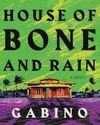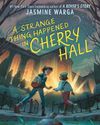
When I’m writing a story, I think often of Roland Barthes’ question in The Pleasure of the Text: “Is not the most erotic portion of the body where the garment gapes?”
I don’t write romance, and I don’t write many sex scenes in my stories, but it’s the perfect writing metaphor for me, especially when I’m writing flash fiction, because tiny stories flow from tantalizing glimpses that lure the reader forward. As much as a writer might want to tell the whole story, a good miniature is created around hints and fleeting appearances. The story moves through the power of suggestion; it lives in the bliss of its mystery.
Before I wrote flash fiction, which is defined as a story less than 1,000 words, I’d trained myself as a novelist, and I thought writing vividly meant to write with a density of telling details, with words that grounded a reader and illustrated the world around them almost as if the author held a movie camera. That can be the case, certainly, but the more I wrote flash fiction (and particularly 100-word stories), the more I learned that there are other tools a writer can use to immerse the reader in the story: the art of excision, the art of compression, the art of omission, the art of writing with spaces and gaps and breaths, the art of less.
I recently wrote a book, The Art of Brevity, to better understand the craft of writing less. Here is how writing flash fiction taught me to write with the power of suggestion.
The Unexpected Benefits of Constraints
The word constraints tends to have a negative connotation. It speaks of restrictions and limits, and in writing, as in life, we tend to want as much freedom and space as we can get. But constraints can nourish your creativity.
This story is from the May - June 2023 edition of Writer’s Digest.
Start your 7-day Magzter GOLD free trial to access thousands of curated premium stories, and 9,000+ magazines and newspapers.
Already a subscriber ? Sign In
This story is from the May - June 2023 edition of Writer’s Digest.
Start your 7-day Magzter GOLD free trial to access thousands of curated premium stories, and 9,000+ magazines and newspapers.
Already a subscriber? Sign In

Writing for a Warming World - Imagining the overwhelming, the ubiquitous, the world-shattering.
Climate change is one of those topics that can throw novelists—and everyone else—into a fearful and cowering silence. When the earth is losing its familiar shapes and consolations, changing drastically and in unpredictable ways beneath our feet, how can we summon our creative resources to engage in the imaginative world-building required to write a novel that takes on these threats in compelling ways? And how to avoid writing fiction that addresses irreversible climate change without letting our prose get too preachy, overly prescriptive, saturated with despair?

Kids' Author Meg Medina Inspires Readers
WD chats with the National Ambassador of Young People’s Literature.

The Horrors of Grief
Whether hot off the presses or on the shelves for years, a good book is worth talking about.

The Mystery of Growing Up
New York Times-bestselling author Jasmine Warga tackles a new genre with her signature blend of empathy for her readers, agency for her characters, and the belief that art is the great connector.

Education
Even if it's not your thing, you're probably familiar with the term dark academia.

A Do-Over Romance
Karin Patton, the first-place winner of the 24th Annual Writer's Digest Short Short Story Awards, shares a funny story about secondchance love and a brief Q&A.

Everyday Wonder
How to mine awe from the mundane

From Ordinary to Extraordinary
Unveil the hidden beauty in the facts and transform your nonfiction with the power of wonder.

Childhood: Our Touchstone for Wonder
How to get in touch with Little You and create big new work for today.

Agent Roundup
22 agents share details, about what kind of writing will pique their interest and offer tips for querying writers...